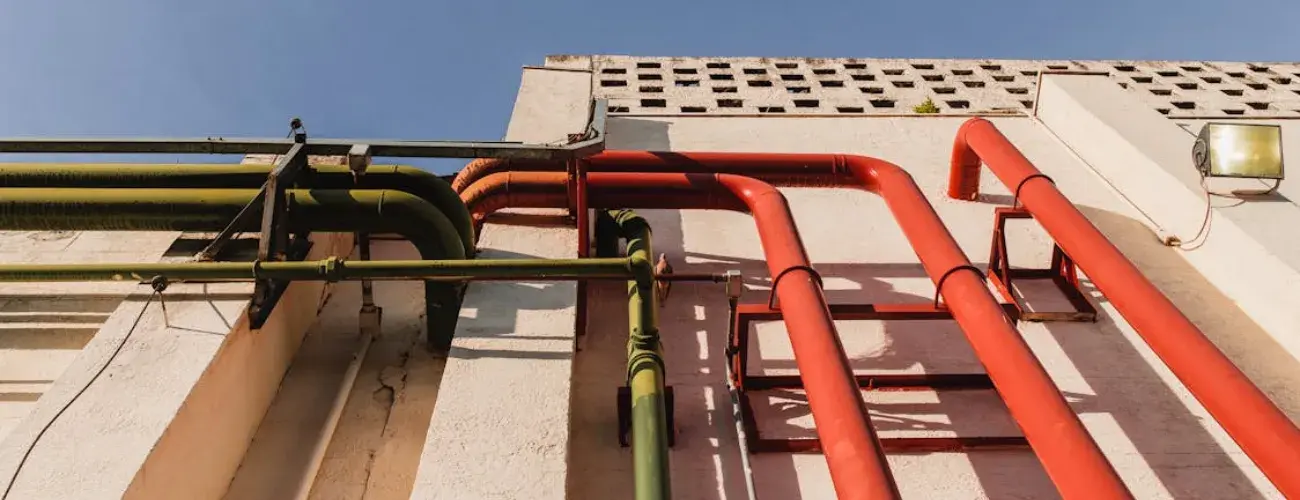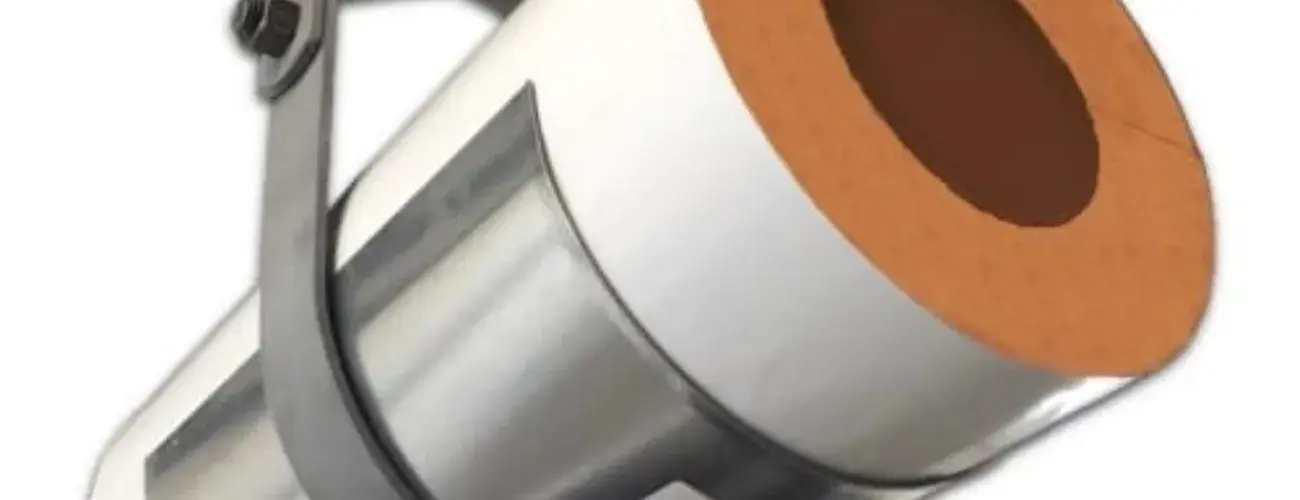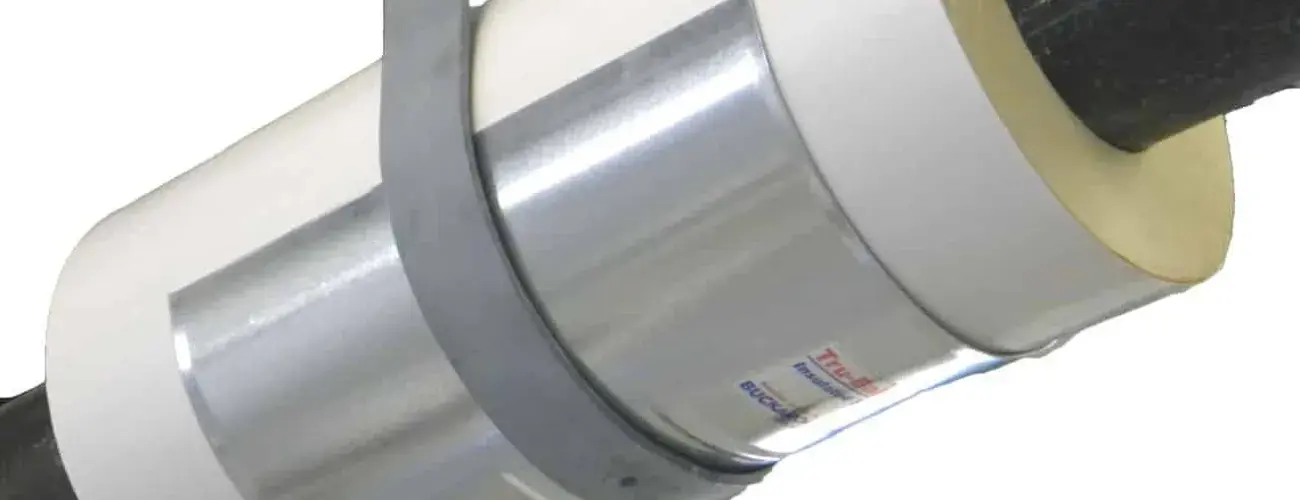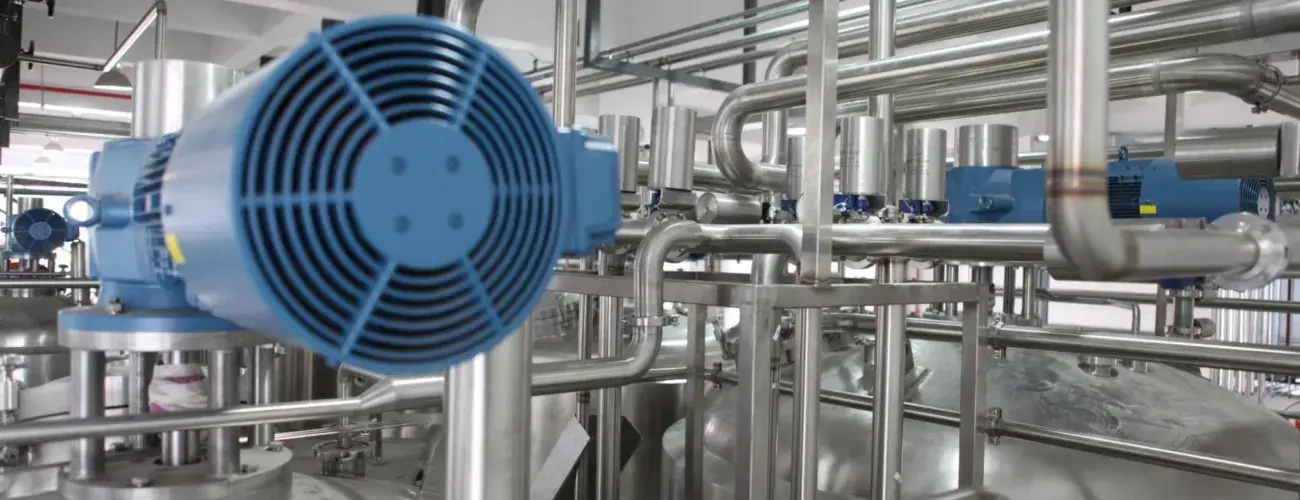Fire-Rated Pipe Insulation Explained
Insulating steam pipes is a critical task for optimizing energy efficiency, ensuring safety, and enhancing the longevity of industrial and commercial systems.
This article will discuss steam pipe insulation and explore various insulation materials as well as the best practices to protect the insulation that surrounds steam pipes.

Understanding Steam Pipes and Their Insulation
Steam pipe systems, also known as steam distribution systems, are meticulously designed configurations of pipes. They move steam from a boiler or a steam generator to several application areas. Numerous industries, including manufacturing, power generation, and heating systems, extensively utilize steam because of its remarkable ability to efficiently transfer heat at elevated temperatures and pressures.
The temperature range during operation is between 215°F and 350°F or higher. This helps to decrease the thermal shock that may occur on the downstream preheating equipment and the boiler. In a typical system, the boiler generates steam by applying heat to water. The steam then travels through the network of insulated pipes to deliver heat where it’s needed.
According to the US Department of Energy: “Insulation can typically reduce energy losses by 90% and help ensure proper steam pressure at plant equipment. Any surface over 120 °F should be insulated, including boiler surfaces, steam and condensate return piping, and fittings.”

The pipes must be properly insulated to minimize heat loss and to protect workers from hot surfaces. The best insulation for steam pipes should have high-temperature resistance, excellent thermal performance, and durability under industrial conditions.
Various factors, such as the operating temperature of the system, ambient environmental conditions, and the desired energy efficiency, will dictate the choice of insulation material.
Options for Steam Pipe Insulation Material
There are several types of steam pipe insulation available, with calcium silicate and mineral fibers being the most common types of insulation. They can handle high temperatures and provide a good insulation value.
Calcium Silicate
Calcium silicate stands out for its durability and high-temperature resistance, which makes it particularly effective at reducing heat loss in piping systems that operate at high temperatures. It has considerable strength, which enables it to endure physical impacts without compromising its insulating attributes. Its non-flammable quality makes it a good choice for applications where fire safety is a critical concern.
Although calcium silicate might command a higher price than other types of insulation, its robust features and long-lasting nature make it a financially sound investment for steam pipe systems that operate at high temperatures.
Fiberglass (Cellular Glass)
Fiberglass, crafted from thin threads of glass intertwined to form a heat-withstanding material, is a favored option for insulating steam pipes. It offers superior thermal insulation that diminishes heat loss and subsequently boosts the total efficiency of the system.
Polyurethane
Polyurethane is a versatile insulation material that is commonly used in a variety of applications, including steam pipe insulation. It provides excellent thermal resistance for effective control of heat loss or gain in steam pipe systems. Furthermore, its structural strength and durability make it suitable for challenging industrial environments.
However, its temperature limit is lower compared to some other insulation materials, so it may not be the best choice for high-temperature steam pipe systems.
Polystyrene
Polystyrene is a lightweight and cost-effective insulation material often used in various insulation applications. However, it’s important to note that while it has good insulating properties, its relatively low melting point makes it less suitable for high-temperature applications such as steam pipe insulation.
Mineral Wool
Mineral wood and “mineral fibers” refer to the same insulation material used for steam pipes. It is made by spinning or drawing molten minerals or synthetic minerals like ceramics and slag into thin fibers. It can tolerate high temperatures, which makes it ideal for steam pipe insulation and it is valued for its fire resistance and ability to absorb sounds.
Polyisocyanurate
Polyisocyanurate, also known as PIR, is a type of thermoset plastic recognized for its exceptional thermal characteristics. While it may carry a comparatively higher price tag, its superior heat resistance and dimensional constancy make it a justifiable expenditure for rigorous applications. In its inflexible state, it can withstand temperature ranges from -297 degrees Fahrenheit to 300 degrees Fahrenheit.
Investing time and resources in proper steam pipe insulation can lead to significant long-term energy savings, enhanced safety, and improved system longevity. Whether you’re choosing fiberglass, mineral wool, or polyisocyanurate insulation, the quality of the installation is as critical as the material itself.
Buckaroos® Products That Enhance Insulation Effectiveness
For enhanced insulation protection, Buckaroos® offers an array of products, such as insulation shields and saddle supports. These products are designed to protect the insulation from compression under the hanger, maintain its integrity, and prolong its lifespan, thereby optimizing the performance of your steam pipe insulation.
Tru-Balance™ 3300E Insulated Pipe Supports

The Tru-Balance™ Model 3300E Insulated Pipe Supports is a top-quality pre-insulated saddle system for commercial piping systems with temperatures up to 300º F. It comes with rigid polyisocyanurate insulation, which is 3 PCF for sizes up to 12″ IPS and 4 PCF for sizes 13″ and larger. The Tru-Balance™ 3300E features a vapor-retardant facing that doesn’t promote mold or fungus growth.
Sliding Saddles

A sliding saddle is a type of pipe support designed to manage both the weight of the pipe, and any movement from thermal expansion and contraction. It consists of two main parts: the saddle and a base that it can slide on. The saddle is shaped to fit the contour of the pipe, and distributes its weight over a larger area to reduce the pressure on any single point.
The sliding base underneath the saddle is typically constructed of two plates of material, often metal, with low friction between them. One plate is fixed, and the other is connected to the saddle, and can slide on the fixed plate. Buckaroos® suggests using Sliding Saddles along with a stiff insulation material instead of using wooden blocks.
CoolDry™ Heavy Duty Pipe Supports

The CoolDry™ Heavy Duty Pipe Supports is designed particularly for NPS pipe sizes starting at 3 inches, and is recommended for installation on roller hangers, or struts. It is ideal for cold water solutions, but it can also be applied to hot piping intended for domestic hot water and low-pressure steam lines up to a temperature of 250°F. With this product in place, thermal performance efficiency is assured across all hangers and support points to secure the entire system.
Secure Your Steam Pipe System with Buckaroos® Support Products
By selecting Buckaroos® products to improve your insulation effectiveness, you are opting for quality and reliability. With our insulation shields and saddle supports, you can be confident in the long-term performance and protection of your steam pipe insulation.
Contact us today to explore our range of products and find the perfect solution for your pipe support needs!

Carrie Powers
Carrie channels her passion for innovative solutions in the construction industry for Buckaroos. With a deep understanding of Buckaroos' leading insulated pipe support systems and insulation protection shields, Carrie ensures that building owners, engineers, and installers are well-equipped with the best tools and products. Her dedication to digital transformation and customer engagement helps Buckaroos maintain its reputation as a trusted resource for professional insulators across North America and Canada.
Featured articles
Industrial Pipe Hangers and Supports
Steam Pipe Insulation 101: Materials and Supports
8 Types of Pipe Supports and Their Features
Understanding Industrial Pipe Insulation and the Options





